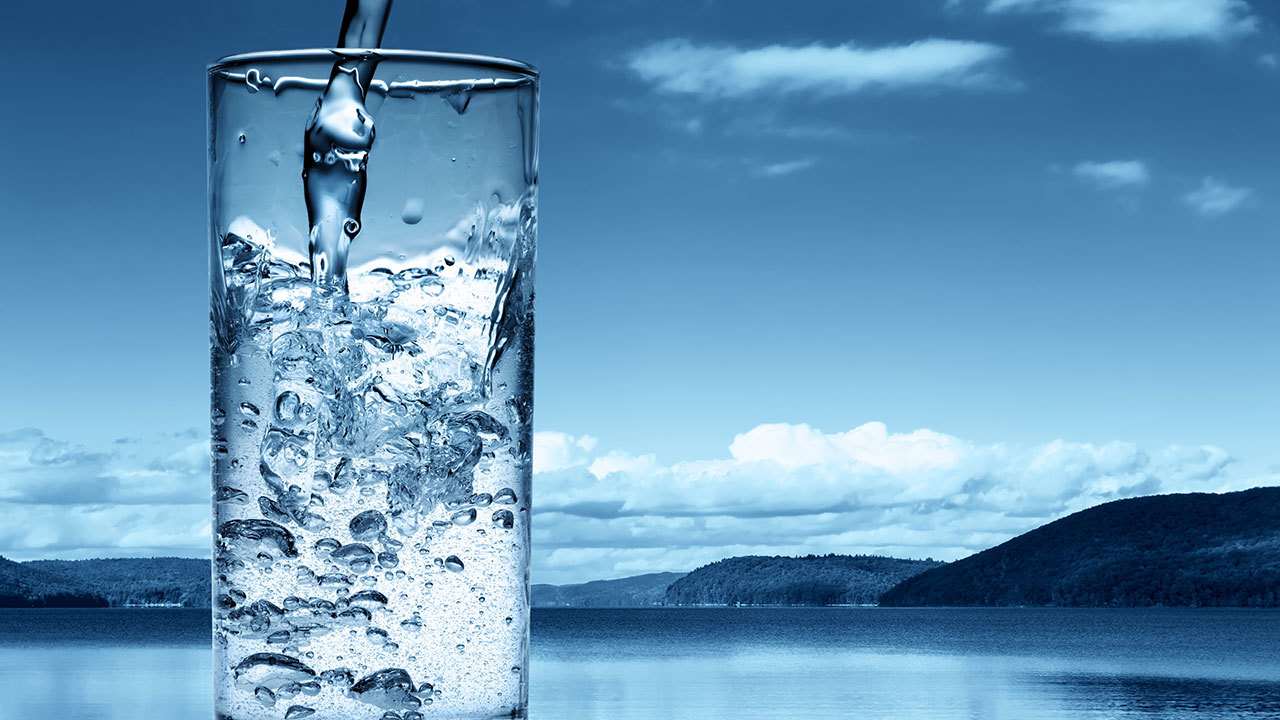IRLPhysics: Cooling Refreshments

Tired of ice cubes? Don't want to wait for the melting and are irritated by the ones that refuse to melt? Can't carry them around? No problem.
\(\large{\text{What to do:}}\)
Preparation:
1. Get a half-full bottle of water.
2. Place it HORIZONTALLY in the freezer.
3. Allow total freezing - for best results leave overnight.
Usage:
1. Take the bottle out of the freezer.
2. Pound it against something hard or squeeze until ice breaks off the wall of the bottle.
3. Pour the desired drink into the bottle; allow sitting for about 30 secs.
4. Pour the drink back into the original container.
5. If not cold enough, repeat steps 3-4.
6. Enjoy!
Extra tip: The bigger the ice bottle, the longer until ice melts. At a certain point in melting you may want to use it to cool water only.

It works for the same reason the icebergs withstood milennia without melting: massive volume, small surface area. In 1000/1000 cases you will confirm that smaller ice cubes melt faster than larger ones. But why? Here, we bypass physics and appeal to basic knowledge and some geometry:
Here's an ice cube:

Here's an ice cube split in two:

It's the same mass and same volume. So what's changed? The surface area. Now, unlike with one full cube, we have the additional internal surface area. Since the ice cube is suspended in fluids, this means that more of the ice cube is being exposed to interacting with its medium at a time - thus increasing the speed of any reactions, and thus, cooling things faster (and melting faster). When the ice cube was whole, the internal region was not interacting with the medium because it was "sealed" inside the cube.
In other words, if you want the fastest cooling, crush your ice. If you want a source of cooling that lasts the longest, make it as large and whole as possible by minimizing surface area and maximizing volume (so a sphere is ideal - but a bottle will do too).
And note that this works for any other item-medium interaction; agar cubes in biology experiments react with chemicals faster if they're smaller, etc. Isn't it great we can explain so much physics without physics - just basic geometry?
Here's some unnecessary experimental data, just for perspective:

Easy Math Editor
This discussion board is a place to discuss our Daily Challenges and the math and science related to those challenges. Explanations are more than just a solution — they should explain the steps and thinking strategies that you used to obtain the solution. Comments should further the discussion of math and science.
When posting on Brilliant:
*italics*or_italics_**bold**or__bold__paragraph 1
paragraph 2
[example link](https://brilliant.org)> This is a quote# I indented these lines # 4 spaces, and now they show # up as a code block. print "hello world"\(...\)or\[...\]to ensure proper formatting.2 \times 32^{34}a_{i-1}\frac{2}{3}\sqrt{2}\sum_{i=1}^3\sin \theta\boxed{123}Comments
P.S. expert tip: allow maximum cooling for one minute; then pour back to source and repeat. Experimental results show that the fastest cooling period is within the first minute (see below).
Challenge to physicists:
Why does water cool at a lower rate as time progresses?
(Hint: You may want to ask some guy who got hit in the head with an apple once.)
Log in to reply
How would pouring it back to source and pouring it back in help speed up the cooling? I would think that the main effect is just from ensuring that the liquid temperature is well-mixed, and so swirling the bottle should be sufficient.
IE The fastest cooling period is at the start because the rate is proportionate to the difference in temperature (normal cooling curves).
Log in to reply
You answered your own question at the end. Pouring back to the source increases its temperature, so, when pouring into the ice bottle, cooling rate is optimized.
It actually works very well with water. Doesn't have the icy-taste side effect and is quite delicious :)
Log in to reply
I would disagree with "Let's increase the temperature so that we can have a faster cooling rate". This is because the rate of change should mostly be dependent on the temperature difference, so increasing the temperature would merely shift your graph to the right, meaning that it will still take more time to cool down to the initial temperature. So, it you increased the temperature from T0 to T1 ,and it takes s seconds to cool down from T1 to T0, then this would prolong the time by s seconds.
Unless you can create an effect of "the more the ice melts, the larger the surface area that is exposed", in which case the rate of change would not be constant with respect to temperature, and it is possible that exposing a larger surface area increases the cooling rate (at constant temperature).
Log in to reply
I see. But here's the thing: we need to cool the ENTIRE drink. So, every time we make a transfer back to the original source, we cool the entire drink a bit.
The reason we don't let the first poured portion of the drink (assuming it's less than a whole) sit there until it equilibrates with the ice bottle is... well, besides potentially turning into ice and defeating the purpose, is, again, to optimize the rate of cooling. If we optimize the rate of cooling of the poured portion, we optimize the rate of cooling of the entire system - because when we pour the drink from the ice bottle back to its source, the two portions equilibrate almost instantly. As far as the "s seconds" go, the "prolonged time" is actually time saved in cooling process due to the higher rate of cooling. It's a little hard without some numbers, but the best way to think about it is if we can't cool the entire drink at once, then the faster we cool that portion which can be cooled, the faster it will cool the entire system (the drink).
Right? In reality, I'm just speculating here. But if you know a better way, I'd really like to know it!
Log in to reply
AH! My assumption is that the entire drink was already poured into the bottle lol.
The way that I do this on a hot summer day, is to use a large 1.5 coke bottle that is half filled with ice (vertically), and then pour in 500ml of water and then drink from the large bottle. Repeat as thirsty.
What you are really asking for is an efficient heat exchanger, that keeps separate the fluids/gases that are involved. A steam locomotive engine is an example of such an heat exchanger, and it has a LOT of small diameter tubes that carry away the hot combustion vapors through the vat of water to be boiled. Heat exchangers typically maximizes surface area of contact, not minimize it. Either than, or I don't understand this problem. Maybe you asking instead for an inefficient exchange of heat, i.e., you want to slow down the heat absorption by the solid ice, presumably to make it last longer?
I think this problem needs a better definition of the problem to be solved. If an engineer is tasked with solving this problem, what exactly is he being asked to do? What are the things to be optimized?
Here's an exploded view of a locomotive steam boiler, showing the tubes
Log in to reply
Both.
We want to avoid the ice cube problem due to fast melting and getting stuck in your drink and all that. So we take a one big ice thing to minimize surface area and maximize the volume. Now, to optimize cooling, we pour back and forth so that the temperature difference is greater between the source and the ice bottle (as I describe below, and as is demonstrated by the graph).
Of course, if you want the fastest melting, slam the bottle on the ground with all your might several times until you crush the ice as much as possible. The ice will melt in five seconds; but now, you have no ice! D:
Log in to reply
Most people tend to think ordinary ice from the freezer is 32°F, but it's actually quite a bit colder than that, because freezers are usually set way below freezing. So, the idea is to have the frozen block of ice absorb as much heat from the drink without melting. It's true that some of the heat absorption by ice goes into melting it, but not necessarily all of it. It's a rate problem, i.e., if the flow of heat is too high, such as touching the ice with a hot piece of metal, the surface of the ice will melt immediately without giving the interior of the ice much chance to absorb the heat. Slow is better, but then we want our drink cooled in a hurry. Sounds like an excellent optimization problem, a non-trivial one. My instincts tell me that we still want to maximize surface contact, and yet, temperature differences need to be minimized, so I can see the final design ending up looking like a complicated heat exchanger.